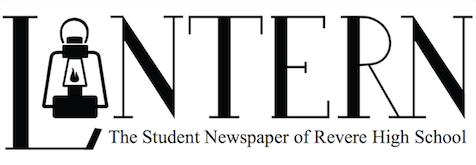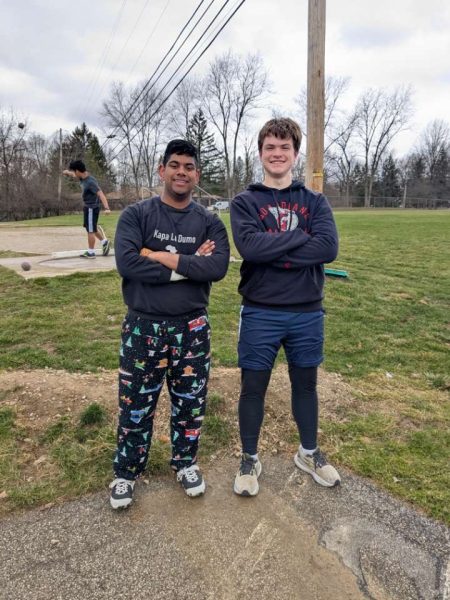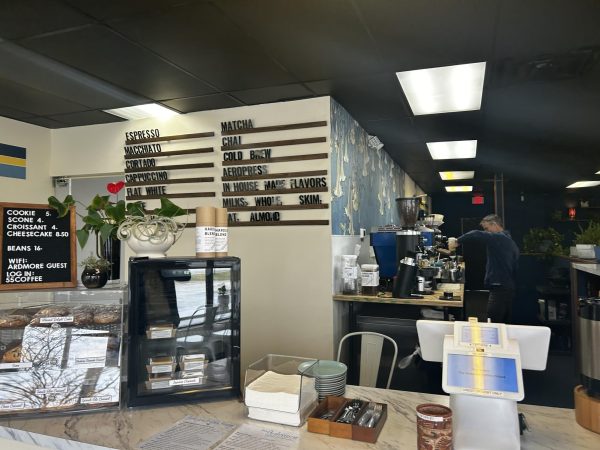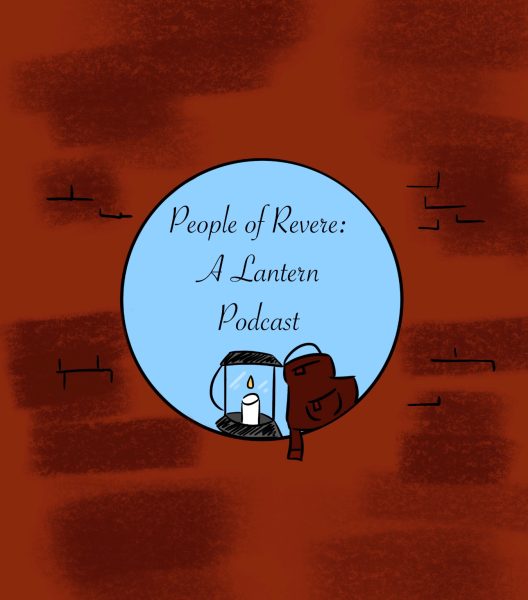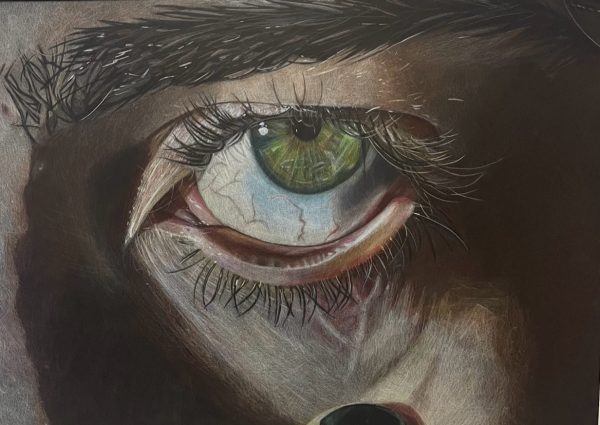Local jeweler utilizes 3D printing technology
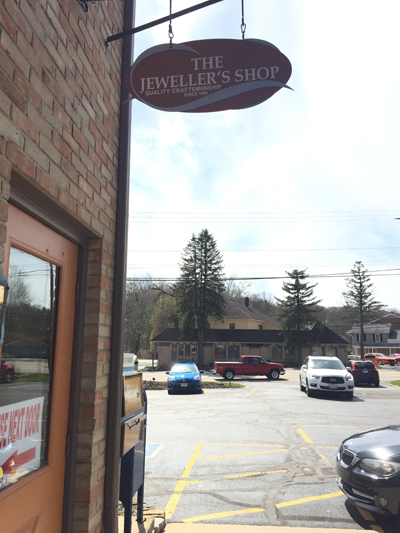
The Jeweller’s Shop is located in Ghent Square.
Beginning in 1975, unrest within the nation of Lebanon caused civil war. Paul Boulos recognized this danger in his home country. Boulos realized that he must seek a future somewhere else. He vividly remembers departing on the 29 of March in 1980 at the age of seventeen for Milan, Italy, leaving his entire family back in Hamana, Lebanon. With no knowledge of the Italian language, Boulos had to adapt to his surroundings as he took on a prospective job at an Italian jewelry shop.
As Lebanon was once a French colony, Boulos’s old private school had taught him the French language. Entering Italy, Boulos only had usable knowledge of the French language, a language he claims to have similarities to Italian. As he entered the country very late in the school year, Boulos took the opportunity to work at a jewelry shop. He explained that Italy originally was not his first choice, but it allowed him to develop a better future. Boulos described his experience in Italy as a foreigner.
“Being in a country and not knowing anybody, doing your own grocery shopping, contacting people and talking to people, forces you to learn the language. I probably learned it quicker than going to school and studying it. You have to eat every day, you have to go buy your ticket for the bus, talk to your neighbor and buy your necessities. You have to learn. What I knew of French and a little bit of English helped me to learn. I now speak four languages. I speak French, Arabic, Italian and English. . . we learn it through communication and contact with people,” Boulos said.
From 1980 to 1983, Boulos studied jewelry at the shop in Milan. Boulos had an affinity for working with his hands, and decided to pursue the jewelry trade, even though he had doubts about how it would work out. If the work choice did not pan out, Boulos would return to his home country of Lebanon. He stated that the shop gave him hands-on experience that a jewelry school could not provide, including drawing skills and craftsmanship. By requiring him to do everything by hand, the shop endowed him with the capabilities to pursue his current career in the jewelry trade. He described his favorite aspect of the jewelry trade.
“The jewelry trade does not have a rule of thumb. There is always a new product you can create. It is a creative industry. Whatever you can imagine a piece of jewelry to be, you can make it. The sky is the limit. The design does not have a booklet. You can make your own,” Boulos said.
In 1989, Boulos’s brother moved to America. Seeking a life in the United States, Boulos moved with his brother. From 1990 to 1996, Boulos worked for Sterling Jewelers, in the same building as his future wife, Gena. He realized that he could pursue the trade on his own while seeking a more direct relationship with customers and a greater education on jewelry. He left Sterling Jewelers and began doing repair work for other jewelry stores, building a customer base until he launched his own business in 2000 as a satellite jeweler, which is a jeweler who balances time between multiple locations. With businesses in Ravenna, Summit Mall and Westlake, Boulos worked at each location for two days of the week, eventually expanding to Boardman.
In 2003, Boulos opened a repair shop in his current establishment’s plaza, Ghent Square. His wife Gena would take care of his appointments at the shop, open on Mondays and Fridays. At the end of 2003, Boulos decided to remain only in the shop, and he and Gena opened their current establishment, The Jeweller’s Shop. Together, the two built up their own inventory and a customer base. Gena graduated from Kent State University and the Boston University of Fine Art, and she assisted Boulos in the selection of designs and products to showcase in the store. Boulos explained the importance of design when creating his products.
“[A piece of jewelry] can please one customer, or it can please a thousand. You could have that one particular customer who needs a unique part, piece or design, and you can make it. The creativity of it always makes me want to make more. There is no repetition. I do not like repetition. The aspect of designing new pieces to make it look beautiful, that is what makes it rewarding for me,” Boulos said.
Boulos has five children: Wally, Tyler, Mariam, Lucia and John-Paul. Boulos went through the trials of life, and he hoped to create a better one for his future family. Lucia and Mariam recall visiting the shop frequently as young children. Lucia described how The Jeweller’s Shop played into her childhood.
“I was homeschooled during middle school and I would go to the store every day with my parents to work on school work there. There is a small room off to the side and in there I would have a computer, a desk and school supplies. It was basically my own little classroom at my parents’ business,” Lucia said.
Boulos explained that he seeks to offer personal, individualized experiences for his 2,500 to 3,500 frequent customers. He believes that jewelry, specifically wedding rings, falls behind a house investment and a car investment as the most important piece of property in life. Every piece that enters The Jeweller’s Shop has certain care instructions. Each stone Boulos uses has a different approach for handling, crafting and cleaning. He informs his customers of what could damage the customized product and what steps they must take if it needs repaired. Boulos wishes to give his customers an experience that differs from that of a chain company jeweler.
“For me to build what I have, it took me seventeen years working sixteen to seventeen hours a day. [I have learned] you can go buy, but you cannot make. That is what is the difference when it comes to individual jewelers compared to chain companies. . . . [Chain stores] buy their stuff from manufacturers, we do not. We make our own stuff. It is made individually and not mass produced, and is very quality-controlled. We cater to a certain quality of product that we like to make, and nothing below that,” Boulos said.
Mariam expressed her admiration for her father’s dedication to the jewelry trade and his business, noting his passion for his merchandise.
“[My father] is all about customer satisfaction and pleasing them and making their visions come true. He works so hard in order to create the best finished product possible,” Mariam said.
Boulos also had to focus on the scientific and mathematical aspects of jewelry as he worked for other companies and eventually co-founded his own business. He explained that geometry plays a big part in jewelry, and that he had to learn as he went. He has taken multiple courses offered by the Geological Institute of America, and is currently obtaining written certification of a course in gem identification, even though seventeen years as a jeweler has already provided him with the necessary skills. He explained the educational side of jewelry, and how he believes his hands-on experience better prepared him for his trade in comparison to the typical initial pursuit of the trade through schooling.
“Every year there is more material that adds on to the programs. I am already practicing, and I know how to identify a stone. Everybody thinks that every single white crystal is diamond, but it is not. You have white sapphire, cubic zirconia, moissanite, white swarovski crystals, and all of these look like diamonds, but they are not. . . . If you go to a school, you do not practice it. I would rather practice it than go to school, it gives you an advantage,” Boulos said.
Originally, jewelers had to carve models by hand using wax and then use drills and pins to sculpt the jewelry. 3D computer imaging and modeling eventually took over the trade, with jewelers using X and Y axes to graphically design a product. Boulos currently uses a 3D laser printer and AutoCAD program, designing concepts of a final product out of a liquid resin to create molds incorporating seven different axes of orientation. This new technology accounts for about ninety-five percent of Boulos’s products. According to Boulos, the 3D printing and designing software benefits his customers, involving them in a unique and satisfying experience.
“For the customers, we can control the volume, the details, the weight, and just about anything. We have control in all aspects of designing: the weight of the gold, the size of the stones, or the volume of the piece, in that program. The customer will see it before it is done. We will print it in a resin material. This allows us to show it to the customer, so they can look at it, and if there are any adjustments needed, we will do the adjustments before the final printing,” Boulos said.
Boulos stated that he visits his family that remains in Lebanon once a year, and that he talks to them once a day. He believes that his circumstances forced him to take a better look at his future. While he may not have always lived in tranquility, he knew his future would grow brighter. He believes he could not have planned his life any better.
